
The BC Step Code Drives Sustainable Solutions in Vancouver
Last Updated: Mar 29, 2025For those of us who have long worked from home, the COVID-19 lockdowns were easier to manage than for most other people used to heading into an office every morning. For the clients and the designers working on the King's Residence in West Vancouver, then, the need to work from home in 2020 only proved just how on-point their approach to the new house had been.
Table of Contents
- Sustainability Via the BC Energy Step Code
- Stewarding the Home and the Environment

The couple decided that they needed to move from their 800-square-foot house to accommodate their at-home businesses. They were involved in the design of their new 2,275-square-foot sustainable home from the start. Amanda, in particular, led the planning, says Brad Ingram, senior design manager at Synthesis Design, which has studios in North Vancouver and Calgary.
"She has a terrific design sense and gave us one the best wish lists we've ever received from a client," Ingram enthuses. "She thinks spatially, all the time. She helped us understand from a philosophical standpoint how and what she wanted to feel in every room. That was both terrifying and exhilarating."

To begin with, Amanda and Kou wanted workspaces separate from the house. This way, when clients visit, they won't enter the couple's private home. At the same time, those workspaces needed to connect to the home's overall flow. Synthesis Design resolved that challenge with a central entry that functions as a welcoming entrance for clients and divides the public office space and the private spaces. The design team arranged the private rooms perpendicular to the entry.
The resulting "L" shape of the house allowed the designers to create a private courtyard, a boon for the private couple as the home sits on a site surrounded by neighbors. A large 14-by-7 foot sliding-glass door from Marvin Doors & Windows in the kitchen and dining space seamlessly connects the inside with the courtyard. Meanwhile, the dedicated wing for Amanda's home-based tutoring business, in addition to private his-and-her studies, made the King's Residence the perfect home to work from during a pandemic.

Sustainability Via the BC Energy Step Code
The British Columbia (BC) Energy Step Code helps architects, builders, and homeowners move through five steps of energy efficiency until they reach net-zero status (step 5). Energy-modeling software and on-site testing show stakeholders how those energy-efficient building standards are being achieved. King's Residence achieved Step 4 by incorporating a super-insulated and air-tight envelope, with an HRV for fresh-air filtering and circulation at 1.47 air changes per hour.
"The Step program forces people to build energy-efficient homes," Ingram says. "The clients were excited about this but didn't know what it entailed. After we did lots of client education on exterior insulation, HRVs, and extra insulation on the inside, they embraced how energy efficient and comfortable the home would be."

A sculptural, abstracted iteration of the traditional farmhouse, the home's building envelope is a single seamless form with the standing-seam metal roof running down the walls. The designers pushed in portions of the envelope to create indented shelters. The low-maintenance exterior includes glossy Wallshell powder-coated fiber-cement panels and Trespa siding, a high-pressure laminate product resembling tongue-and-groove wood, at the front and back of the house.

Beneath the siding is a plywood sheathing, 1.5 inches of exterior Rockwool insulation (also known as mineral or stone wool), and spray foam insulation to reach R-24 in the walls. The R-40 roof is insulated with spray foam. All of the walls and roof have a vapor barrier and taped sheathing to ensure air-tightness. The floor was constructed slab on grade with rigid foam insulation to reach R-20. Some of the windows are double-glazed, some triple-pane, with low-E coatings and argon gas.
While the heat pump is electric, the clients opted for a natural gas furnace that's 97% efficient. The team conducted blower-door tests to confirm the home had reached Step 4.
Electricity
Shop a wide variety of electrical products that look after power to your home.

Emporia Classic Level 2 48 AMP EV Charger UL Listed
Emporia
In Stock
2 Colors
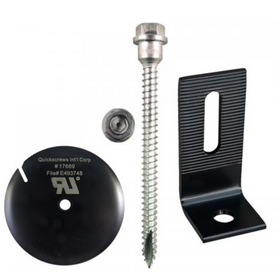
QuickBOLT QB2 with Microflashing Multi Roof Mount Solar Panel Fastener Kit
QuickBOLT
In Stock

Emporia Pro Level 2 48 AMP EV Charger UL Listed
Emporia
In Stock
2 Colors
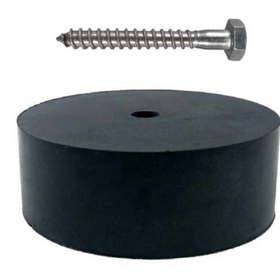
QuickBOLT 2-1/4" EPDM Solar System Conduit Mount w/Screw
QuickBOLT
In Stock
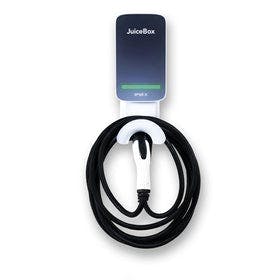
Enel X JuiceBox Residential 48 Level 2 Hardwired
Enel X
Out of Stock
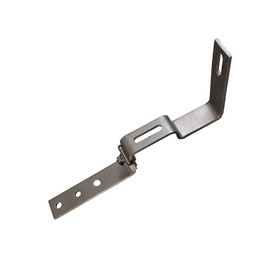
QuickBOLT Stone Coated Roof Height Adjustable 18mm for Side Mount Rails - Short
QuickBOLT
In Stock

Emporia Vue 3 3-PHASE Energy Monitor
Emporia
In Stock

Emporia Vue 3 Home Energy Monitor
Emporia
In Stock
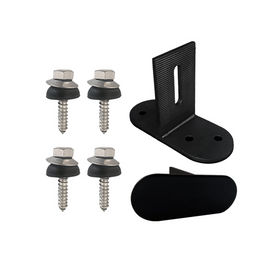
QuickBOLT Deck T Mount Solar Panel Fastener Kit
QuickBOLT
In Stock
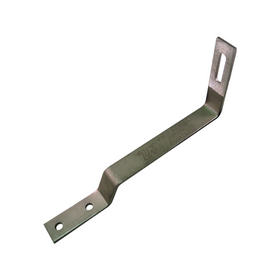
QuickBOLT Flat Tile Roof Hook for Solar Panel Side Mount Rails
QuickBOLT
In Stock

The interior finishes include white-oak flooring and quartzite kitchen countertops. A 100-year-old fir post and beam, reclaimed from a building in Vancouver's Gastown neighborhood, divides the living room and kitchen. In Amanda's tutoring office, a combination window-skylight starts in the wall and wraps up to the roofline. Upstairs, the master suite a vaulted ceiling and double-pane, argon-gas-filled skylights so the couple can enjoy the night sky.
"Our new house is a gem because of the Synthesis team and their artistry, experience, careful attention to detail, and can-do attitude," says Kou. "The architects welcomed and distilled our ideas to create a unique home that matches our vision and lifestyle."

Stewarding the Home and the Environment
King's Residence is extremely energy efficient, with a tight building envelope, excellent air circulation, and energy-efficient appliances. Still, it's critical, says Curtis Krahn, principal of Synthesis Design, that "the clients understand how to use the systems and how their lifestyle affects energy use." Significantly, he adds, when the sustainable home is also a smart home with programmable thermostats and heat pumps. "Our homes are now smart, so we need to be smarter," Krahn adds.

"You can't simply leave the manuals after the house is complete and the homeowners have moved in," he explains. "Builders, contractors, and designers also need to instruct the clients on what happens when they use and adjust different systems, and how they have made lifestyle changes to ensure the smart, sustainable house works best for them."
He also advises homeowners to make sure "designers, builders, energy advisors, plumbers, electricians, other contractors, and the homeowners are on the same page when it comes to building and operating a smart energy-efficient home. Homeowners will have a lot to understand and think about to operate the house for maximum energy efficiency."

In doing so, homeowners can become "good stewards of the home and environment," Ingram adds. And clients, like the owners of King's Residence, will applaud their team for "really listening to what we wanted and surpassing our expectations."
Camille LeFevre
Camille LeFevre is an architecture and design writer based in the Twin Cities.
